Growing Drummond phlox from seeds, planting rules and care
Phloxes, both perennial and annual, can compete for the title of the most popular flowers. A variety of colors, abundant long flowering and unpretentiousness are the main advantages of the flower. Drummond's phlox, loved by gardeners, is easy to grow from seed, easy to plant and simple to care for.
Description and varieties
The species was named after the English traveler Henry Drummond, who brought flower seeds from North America.
The plant is a short - from 12 to 35 cm - bush with branching stems. Leaflets are lanceolate, opposite. The color of the corollas of double or star-shaped fragrant flowers of white, purple, cream, various shades of red - from delicate salmon to dark, rich burgundy. The standard flower diameter is 2 cm, varieties with larger corollas are bred.
Most often, the following varieties of Drummond phlox are found in flower beds.
- Promise Pink - bush up to 20 cm high. Flowers are double, pink. It is used in group and single plantings or as decoration of alpine slides.
- Constellation - lush 30-centimeter bushes with flowers that can be painted in different colors - from white to bright red. Differs in a strong aroma of 3-centimeter flowers, is used not only in flower beds, but also in cut.
- Twinkling Star - compact bushes up to 25 cm. The petals are pointed, which makes the flower look like a star. Differs in long - from June to September - flowering. The variety is grown both in the open field and in containers.
- Star Rain - a giant among annual phloxes, about 50 cm high. Flowering is long, but only in sunny places. The variety perfectly tolerates drought and light spring or autumn frosts, without losing its decorative effect.
- Buttons - a variety series of low-growing (up to 20 cm) drought-resistant phloxes with a two-color color - an eye in the center of the flower.
Annual varieties are often used to decorate balconies, interiors, and flower arrangements.
Growing from seeds
The only problem that summer residents face when growing annual phlox is a long wait for shoots. With spring sowing in open ground, they begin to bloom in the second half or third of summer. Therefore, they are usually planted either before winter, or in early spring - for seedlings.
Winter sowing
Seeds are sown directly to the flower bed in October-November. Early snow is not a hindrance - it is shoveled off and the seeds are scattered on the ground, maintaining an interval of 4-5 cm. Then the crops are sprinkled with the soil stored from warm days, followed by snow. They complete the work by covering the beds with dry leaves, hay or straw.
For the most accurate determination of the timing of sowing Drummond phlox seeds in the fall, they use a popular sign: the last leaf from a cherry fell, you can sow seeds.
Phlox shoots appear in early spring. When the seedlings form the first pair of true leaves, they are dived, seated at a distance of 20-25 cm from each other.
Sowing phlox for seedlings
Sowing of seeds is usually started in March (specific dates depend on the climatic conditions of the area - about two months before the transfer of seedlings to flower beds). For the middle lane, a transplant is planned for the second half of May, in the south - from the end of April.
Any substrate is suitable - garden soil or purchased universal soil. Seedling containers should have drainage holes.Seeds are scattered over the surface of the substrate, covered with a thin layer of earth, sprayed with slightly warmed water (24-26 ° C). Containers with crops are covered with foil or glass and placed in a warm place.
To accelerate the emergence of seedlings, seeds are not pressed into the ground.
To prevent fungal diseases from developing in the mini-greenhouse, the crops are aired daily for 20-25 minutes.
The transparent cover is removed when the first shoots appear. Seedlings are moved to a well-lit windowsill. The main care at this stage is to regularly moisten the soil.
When the seedlings form 2-3 true leaves, they are cut into separate cups. After a pick, they will need more careful care.
- The first 2-3 days, the cups with seedlings are covered from direct sunlight using paper or an opaque white film.
- With the appearance of the 6th true leaf, pinch the top to stimulate the growth of lateral shoots.
- From the second week after transplanting, the seedlings are fed with mineral fertilizers. Usually they use "Kemira" or "Fertik", diluting them with water according to the instructions. Fertilizers are applied every 2 weeks.
The hardening of seedlings begins in the second half of April.
When growing from seeds of various varieties of Drummond phlox, it is taken into account that taller varieties (over 35 cm) are sown a week earlier than undersized ones. Simple wisdom will give the simultaneous beginning of flowering plants in a flower bed.
Spring sowing seeds
A suitable time for sowing Drummond phlox in the spring on a flower bed is the first decade of May. In the flower beds, grooves are made with a depth of 1.5-2 cm, they are spilled with water. When the moisture is absorbed, the seeds are laid out. Usually 2-3 seeds are planted at one point, maintaining a step between the pits of 15 cm.
Seedlings appear in two weeks, all this time the crops are kept under agrofibre (lutrasil, spunbond) to conserve moisture and heat. The emerging seedlings are thinned out, leaving the strongest ones.
How to plant phlox in spring?
With the establishment of the final heat, the seedlings are planted in flower beds. The place for planting phlox should be well lit by the sun, but at noon there should be a light shade. The catch is that the rich color of the corolla of Drummond's phlox fades under the scorching sun, becomes faded.
The soil for the normal development of flowers should be light, fertile, neutral and well-drained. The optimal composition of the soil is fertile sandy loam. Lime or dolomite flour is used for deoxidation. To make the clay or loam suitable for growing Drummond phlox, they are supplemented with humus or peat mixed with sand.
To plant seedlings, the holes are made a little deeper than the seedling cups. Drainage, ash, as well as a small amount of organic matter - compost, biohumus are placed on the bottom. Seedling roots are straightened horizontally, covered with soil. Then the plantings are watered, the soil is covered with mulch.
Phlox care
Caring for the plantings of Drummond phlox is not difficult. Loosening of the soil is carried out every two weeks at a shallow depth. In the second half of July, the plants are spud. Watering should be regular, waterlogging or drying out of the soil is not encouraged. Water consumption rate for irrigation - 1.5-2 buckets / m2 (depending on the frequency of natural precipitation). In extreme heat, phlox are watered twice a day, morning and evening. Water is poured at the root.
So that the root system of Drummond phlox does not crack when watering, water is taken well warmed up in the sun.
Feeding schedule:
- end of May - top dressing with liquid manure (25-30 g / 10 l of water);
- early June - fertilization with liquid manure and superphosphate with potassium sulfate;
- early July - only liquid manure is introduced;
- late July or early August - fed with potassium and phosphorus.
Throughout the season, phloxes pinch the tops so that lateral shoots with buds actively grow.Faded flower heads, damaged stems and leaves are regularly removed - this way the plants will bloom longer and retain a pleasant appearance.
Diseases and pests
Phloxes of Drummond get sick very rarely. In the wrong place of planting, in case of irrigation regime violations or with a large amount of rain, the flowers become infected with powdery mildew and variegation. The remedy is copper-containing preparations, as well as the removal of affected plant parts.
The pests most commonly affecting phlox are nematodes. All affected plants are dug up and destroyed, the soil is treated with nematicides.
Depending on the terrain, it is not excluded slug fighting... Usually, soil mulching is used with various folk remedies - tobacco dust, fluff lime, ground hot pepper, etc.
In case of an invasion of leaf-gnawing insects, the plantings are treated with appropriate insecticides.
To create unusual phlox compositions on flower beds, ground cover perennial phloxes are often used - Douglas, subulate and other creeping species. Convenience of their joint cultivation - in identical conditions required by plants, and the same care. Such joint plantings are good in that the creeping varieties fade before the Drummond phlox, and then form delicate bright sods, emphasizing the showiness of other flowers.
Growing Drummond phlox from seeds is a simple process, as well as planting seedlings and further caring for beautiful flowers. Not taking a lot of time from the summer resident, not requiring special knowledge and skills, the cultivation of this flower culture is guaranteed to ensure the beauty and uniqueness of the flower garden from the first warm days to frost.
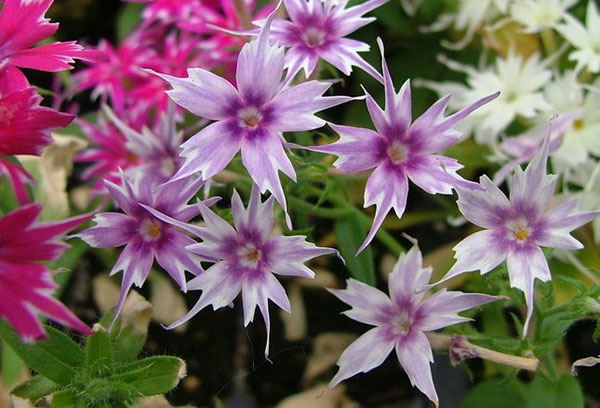
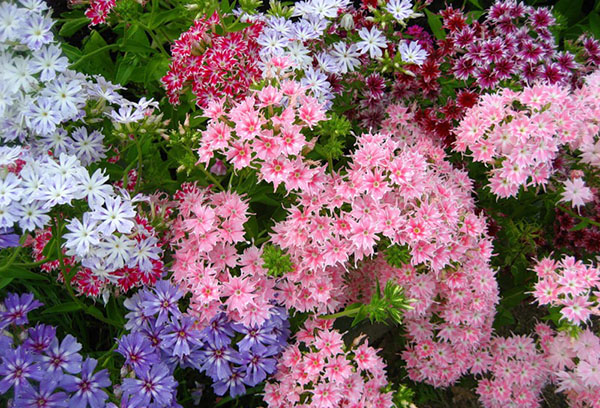
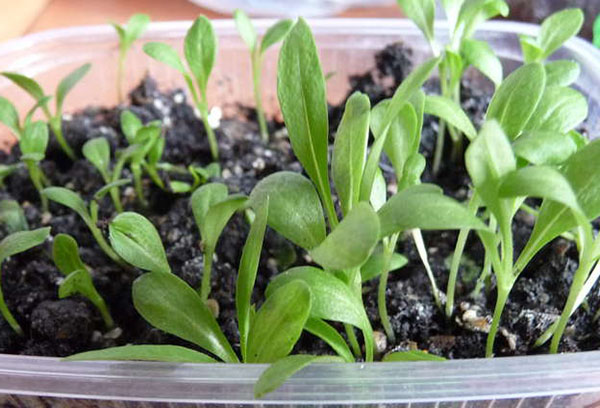
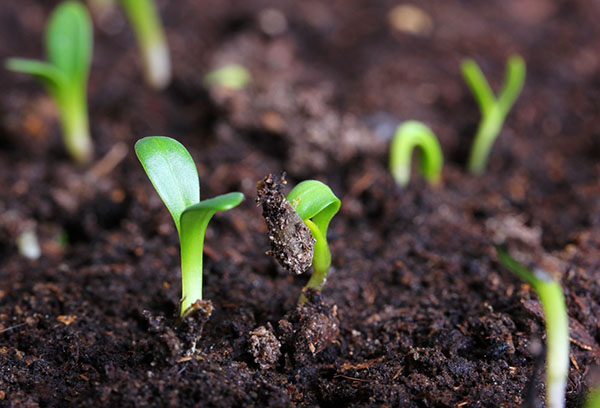
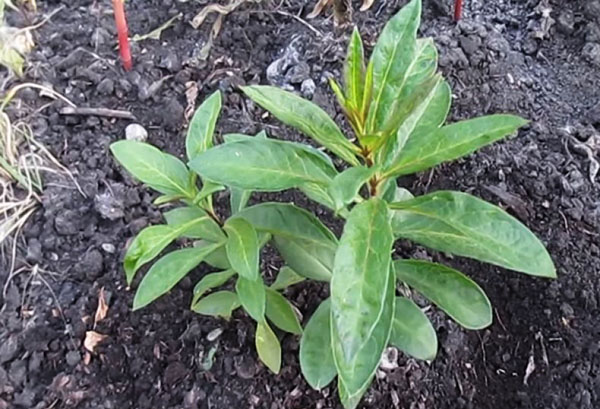
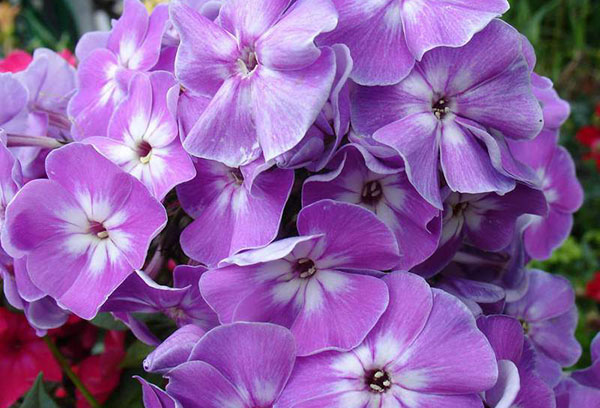

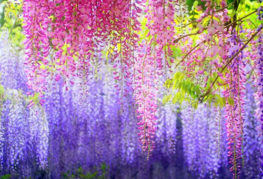
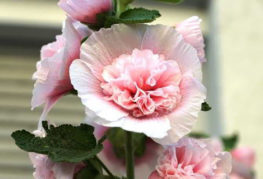
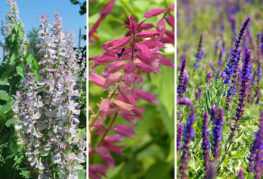

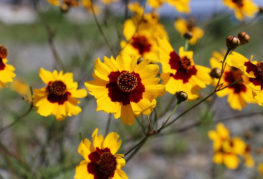
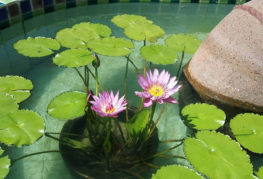
and will be published shortly.